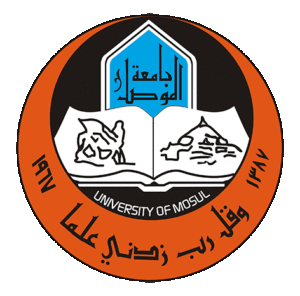
University of Mosul
About the University of Mosul
The first building blocks of the University of Mosul date back to 1959 AD, the year in which the College of Medicine began its first academic year in Mosul. However, the actual emergence of the University of Mosul as an existing scientific and educational institution on the ground dates back to the first of April 1967 AD, the day on which Resolution (14) was issued to establish an Iraqi university called – University of Mosul – and the university expanded over the years of its work to include (24) colleges, (7) research centers, (6) consulting offices, five clinics and hospitals, six museums, and a number of technical and administrative directorates and units.
The University of Mosul seeks to achieve the goals of higher education in Iraq, which are preparing scientifically qualified national cadres and supporting the scientific research movement and serving the community. In terms of preparing cadres, the University of Mosul grants bachelor’s degrees, higher diplomas, professional diplomas, master’s degrees and doctorates in (138) scientific specializations distributed in the various fields of specialization of the university’s departments. The university also follows up on its graduates after their employment in government departments through successive courses of the continuing education program, which aims to re-inform and update graduates by informing them of the latest scientific discoveries.
In support of the scientific research movement, the university imposes on its teaching staff a continuous research system that qualifies them to advance scientifically and stand in the front ranks of the scene of modernizing sciences and patents and presenting everything that is new. In terms of community service, the university provides its services to its environment through dozens of arms and windows, including field practice experiments in which scientific teams composed of university students and professors move to selected villages and regions to provide advisory and therapeutic services to residents in various health, agricultural, scientific and social fields. It has been holding these experiments every summer since 1988. It also holds experiments in creative arts competitions for university students in more than thirty creative genres, aiming to embrace and nurture the talents of university students. The university holds experiments in field surveys of schools in Nineveh Governorate in the field of oral and dental diseases. The university has entered the field of encyclopedic projects, so it issued the Mosul Civilization Encyclopedia in five volumes and is preparing to issue the Iraq Civilization Encyclopedia in more than twenty volumes. The university has a role in spreading the Arab creative heritage, as it undertook to present the first An edition of the book ((Uqud al-Juman fi Shu’ara’ Hadha al-Zaman)) by Ibn al-Sha’ar al-Mawsili, which consists of ten parts, the manuscripts of which were collected by the university from all over the world. The university issued the first Arab astronomical calendar since the Abbasid era and one of the four most important international calendars. It has issued parts of the annual calendar since the year 2000 AD. The area of the first center of the University of Mosul is estimated at 52.85 hectares, in addition to the area of the second university center is estimated at 2,296 hectares, including the professors’ houses. The area of the College of Medicine is estimated at 8,517 m.
Since its establishment, the University of Mosul has been dedicated to providing an integrated academic and living environment, offering a wide variety of elements and services that work together to create an ideal lifestyle for students. This environment stimulates the learning process and helps students develop themselves and build strong social relationships, enabling them to improve and advance their personal, academic, and professional skills. Based on this premise, the University of Mosul provides all the services and facilities students need during their university studies. On-campus housing facilities include healthcare, psychological, and social care, cafeterias and various restaurants, a sports complex, a university theater, libraries, information resources, research and computer labs, classrooms, and more. The campus is surrounded by green spaces, plants, trees, and flowers, inspiring students to be creative, excel, and innovate. This is not to mention the magnificent architectural design and construction of the university’s buildings, colleges, and facilities, which are distinguished by their combination of authenticity, civilization, and history, making them an architectural masterpiece and a cultural landmark in their own right.
General Information
Year of Establishment: 1967 Officially
Number of Faculties:
24 Faculties are listed below in order of establishment as follows:
Faculty of Medicine 1959
Faculty of Science 1963
Faculty of Engineering